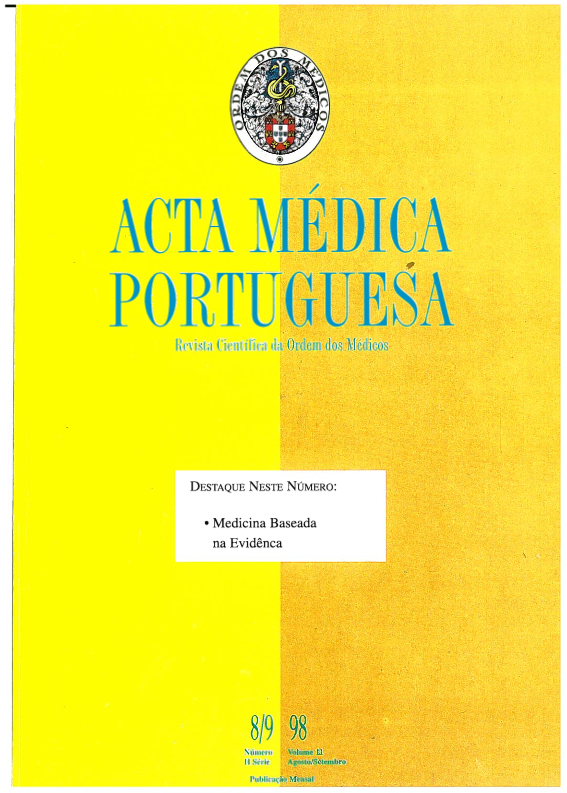Avaliação da filtração glomerular numa população hospitalar. Comparação de dois métodos.
DOI:
https://doi.org/10.20344/amp.2316Resumo
This study was undertaken to assess the value of Cockroft-Gault Formula (FCG) in the patients of an Internal Medicine ward.FCG was compared with creatinine clearance (DC) adjusted for corporal area. Serum creatinine was measured after 24 h urine collection and 8 h fast. By the subtraction of FCG from DC, the variable difference (DIF) was calculated. FCG was calculated using total body weight (PT) and lean body weight (PS). All patients were included unless they had renal failure.Renal function was calculated in 92 patients, 33 women and 59 men. Mean age was 60.8 +/- 17.9 (13-87). Mean FCG (64.7 +/- 27.4) and mean DC (68.4 +/- 32.6) were not significantly different and a correlation between them was found (r = 0.68; p < 0.001). Using PS to estimate FCG the correlation coefficient was increased to 0.75 (p < 0.001). DC and FCG using PT or PS correlated inversely with age (r = 0.59; r = 0.53; r = 0.66, respectively; p < 00.1). In a cluster analysis model we could find that for extremes of renal function FCG overestimated (DIF = -10.4 +/- 13.3) or underestimated (DIF = 29.8 +/- 29.7) DC. The main influence for the difference between the two methods was body weight (r = -0.69; p < 0.001). The distribution by diagnosis led to two classes of patients for whom DIF was significantly different (p < 0.02), and body weight was the main factor.Cockroft-Gault formula, although correlating with creatinine clearance, over or underestimates creatinine clearance for extremes of renal function. Age and body weight were the main factors for the differences found between the two methods.Downloads
Downloads
Como Citar
Edição
Secção
Licença
Todos os artigos publicados na AMP são de acesso aberto e cumprem os requisitos das agências de financiamento ou instituições académicas. Relativamente à utilização por terceiros a AMP rege-se pelos termos da licença Creative Commons ‘Atribuição – Uso Não-Comercial – (CC-BY-NC)’.
É da responsabilidade do autor obter permissão para reproduzir figuras, tabelas, etc., de outras publicações. Após a aceitação de um artigo, os autores serão convidados a preencher uma “Declaração de Responsabilidade Autoral e Partilha de Direitos de Autor “(http://www.actamedicaportuguesa.com/info/AMP-NormasPublicacao.pdf) e a “Declaração de Potenciais Conflitos de Interesse” (http://www.icmje.org/conflicts-of-interest) do ICMJE. Será enviado um e-mail ao autor correspondente, confirmando a receção do manuscrito.
Após a publicação, os autores ficam autorizados a disponibilizar os seus artigos em repositórios das suas instituições de origem, desde que mencionem sempre onde foram publicados e de acordo com a licença Creative Commons









